How to Choose the Best Walk-In Tub for Seniors

As we age, safety and comfort become increasingly important considerations in our daily lives, especially when it comes to personal hygiene. Traditional bathtubs, while common, can pose significant challenges and risks for seniors. These risks include difficulty entering and exiting the tub, and the danger of slipping. Walk-in tubs offer a practical solution to these issues, providing an accessible and secure bathing experience tailored to the needs of seniors.
Walk-in tubs are designed with features that enhance safety, comfort, and independence. These specialized walk-in bathtubs come equipped with low-threshold entries, built-in seating, and a variety of therapeutic options, making them a popular choice for those looking to maintain their quality of life and independence at home.
In this guide, we will explore the key benefits of walk-in tubs, important factors to consider when choosing the right one, and practical advice on installation and maintenance.
The Benefits of Walk-In Tubs
Walk-in tubs offer a range of advantages that go beyond the capabilities of traditional bathtubs, making them an excellent choice for seniors. Here are some of the primary benefits:
Increased Safety and Reduced Risk of Falls
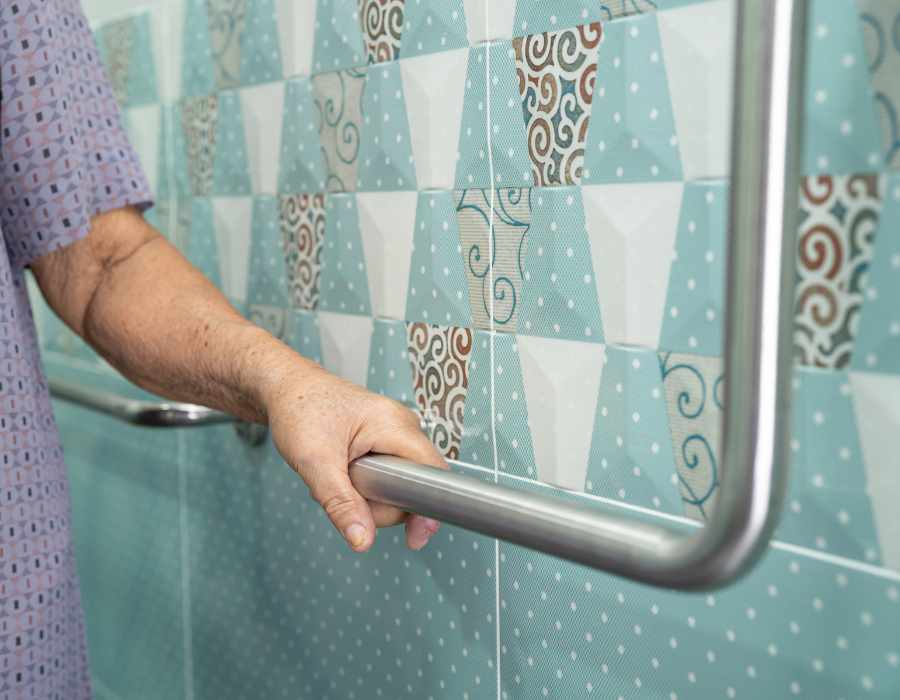
Low Threshold Entry
One of the standout features of walk-in tubs is their low threshold entry, which significantly reduces the risk of tripping and falling. Seniors can easily step over a low entry point without the need to lift their legs over a high tub wall, making it much safer to enter and exit the tub.
Built-in Safety Bars and Handrails
Walk-in tubs often come equipped with strategically placed grab bars and handrails. These provide additional support and stability, helping users maintain their balance and preventing falls while getting in and out of the tub.
Anti-Slip Floors
The floors of walk-in tubs are typically designed with slip-resistant surfaces to provide traction and minimize the risk of slipping, even when the floor is wet. This feature is important for enhancing safety during bathing.
Enhanced Accessibility and Comfort
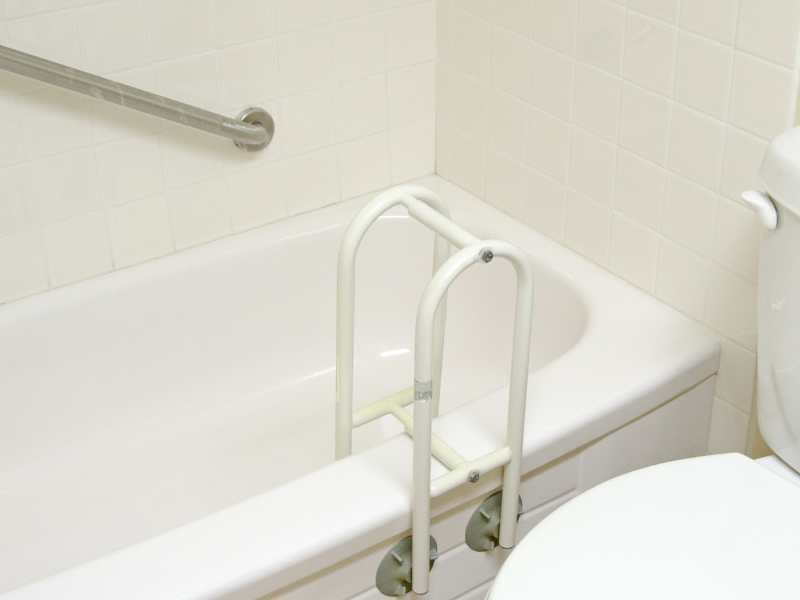
Wide Doorways
Walk-in tubs feature wide doorways that accommodate individuals with mobility aids, such as walkers or wheelchairs. This design allows for easier access and promotes independence for seniors who may have difficulty with traditional tub entry.
Ergonomic Seating
Most walk-in tubs include built-in seating that is ergonomically designed for comfort. These seats are often at a height that makes it easy for users to sit down and stand up, reducing strain on the joints and muscles.
Easy-to-Reach Controls
The control panels in walk-in tubs are typically positioned within easy reach, allowing users to operate the tub’s features, such as water temperature and hydrotherapy jets, without having to stretch or move awkwardly.
Therapeutic Features for Health and Wellness

Hydrotherapy Jets
Many walk-in tubs are equipped with hydrotherapy jets that provide a soothing massage. These jets can help alleviate muscle tension, reduce pain, and improve circulation, making them beneficial for seniors with arthritis or other chronic conditions.
Heated Surfaces
Heated seating and backrests are common features in walk-in tubs. The warmth not only enhances comfort during bathing but also promotes relaxation and relief from muscle stiffness.
Chromotherapy and Aromatherapy Options
Some walk-in tubs offer advanced features like chromotherapy (color therapy) and aromatherapy. Chromotherapy uses colored lights to create a calming atmosphere, while aromatherapy diffuses essential oils to enhance the sensory experience, contributing to overall well-being.
Key Considerations When Choosing a Walk-In Tub
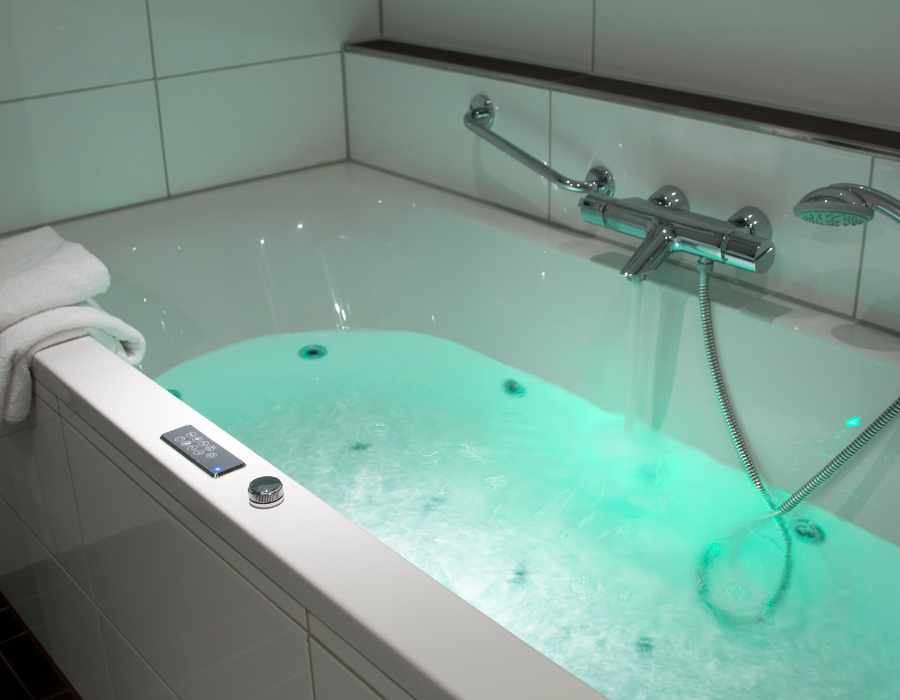
Selecting the right walk-in tub involves careful evaluation of various factors to ensure it meets your specific needs, preferences, and bathroom layout. Here’s a detailed look at what to consider:
Tub Dimensions and Space Requirements
Measuring Your Bathroom Space: Before choosing a walk-in tub, measure your bathroom to determine the available space. Ensure that the dimensions of the tub will fit comfortably without overcrowding the area. Consider doorways, hallways, and the overall layout to facilitate smooth installation.
Choosing the Right Tub Size for Your Needs: Walk-in tubs come in various sizes to accommodate different body types and mobility needs. Consider the height, width, and depth of the tub. For instance, deeper tubs provide a more immersive experience, while wider tubs offer more space for movement. Choose a size that ensures comfort and safety.
Types of Walk-In Tubs
Soaker Tubs: Soaker tubs are the simplest type, designed for those who prefer a traditional bathing experience without added features like jets or air bubbles. They provide a deep soak, which can be relaxing and therapeutic.
Hydrotherapy Tubs: These tubs come with water jets that offer a gentle massage, ideal for soothing sore muscles and joints. Hydrotherapy tubs are beneficial for seniors with arthritis or chronic pain, providing relief through targeted water pressure.
Air Jet Tubs: Air jet tubs use air bubbles to create a gentle, effervescent massage. They are a great option for individuals with sensitive skin or those who prefer a milder form of therapy compared to hydrotherapy.
Combination Tubs: Combination tubs offer both water and air jets, providing the benefits of both hydrotherapy and air jet massage. They are versatile and suitable for users who want a comprehensive therapeutic experience.
Door Design and Configuration
Inward vs. Outward Swinging Doors: Inward-swinging doors are more common and provide a tight seal to prevent leaks. However, they require clearance space inside the tub. Outward-swinging doors are easier to open and close for those with limited mobility but require more bathroom space to accommodate the door swing.
Side Entry vs. Front Entry: Side-entry doors are generally easier to use, offering more space for entry and exit. Front-entry doors are more compact and can fit in smaller bathrooms, but may be less convenient for users with limited mobility.
Material and Build Quality
Acrylic vs. Fiberglass: Acrylic tubs are durable, easy to clean, and resistant to mold and mildew, making them a popular choice. Fiberglass tubs are lighter and often less expensive but may not be as durable as acrylic. Consider the material that best fits your budget and maintenance preferences.
Durability and Maintenance: Choose a tub made from high-quality materials that offer long-term durability. Look for features like anti-microbial surfaces and easy-to-clean finishes. Assess the maintenance requirements to ensure the tub remains in good condition with minimal effort.
Essential Features to Look for in a Walk-In Tub
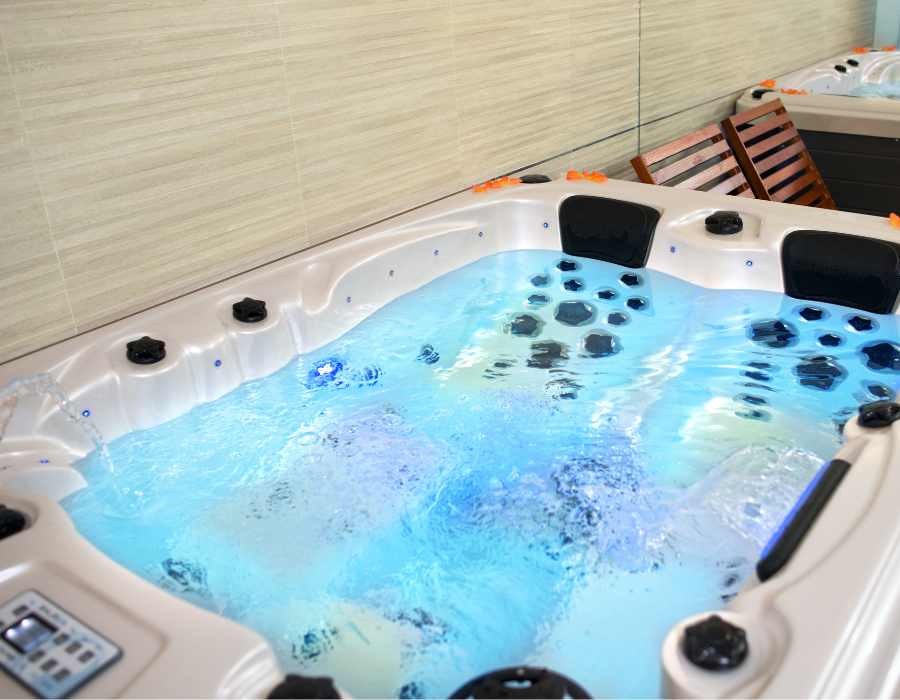
When evaluating walk-in tubs, focus on features that enhance safety, convenience, and overall bathing experience. Here are the key features to consider:
Safety Features
Grab Bars and Handrails: Ensure the walk-in tub includes grab bars and handrails that are strategically placed for easy access. These features provide extra support and stability, reducing the risk of falls and improving safety.
Anti-Scald Technology: Anti-scald technology prevents water from reaching dangerously high temperatures, protecting users from burns. Look for tubs with built-in temperature control mechanisms to ensure safe and comfortable bathing.
Slip-Resistant Floors: Choose a tub with slip-resistant flooring to prevent accidents. This feature is important for maintaining traction and stability, especially in a wet environment.
Convenience and Usability
Quick Drain and Fill Systems: Quick drain and fill systems reduce waiting times by rapidly filling and draining the tub. This feature enhances convenience, allowing users to enter and exit the tub more quickly and comfortably.
Easy-to-Use Control Panels: The control panels should be intuitive and within easy reach, allowing users to adjust settings without having to move awkwardly. Look for digital or manual controls that are simple to operate, even for individuals with limited dexterity.
Handheld Shower Wand: A handheld shower wand provides flexibility for washing hard-to-reach areas and makes it easier to rinse off without having to move. It’s especially useful for users with limited mobility or those who prefer a more controlled shower experience.
Comfort and Therapy Options
Heated Seats and Surfaces: Heated seating and surfaces enhance comfort by providing warmth during the bathing process. This feature is particularly beneficial in colder climates and for users with conditions like arthritis that benefit from heat therapy.
Massage Jets and Air Bubbles: Consider tubs with adjustable massage jets and air bubbles for a customizable therapeutic experience. These features can help relieve muscle tension, improve circulation, and provide a relaxing massage.
Adjustable Water Pressure and Temperature: Look for walk-in tubs that allow you to adjust water pressure and temperature settings to your preference. This flexibility ensures a comfortable and personalized bathing experience, catering to individual needs.
Installation and Maintenance Considerations
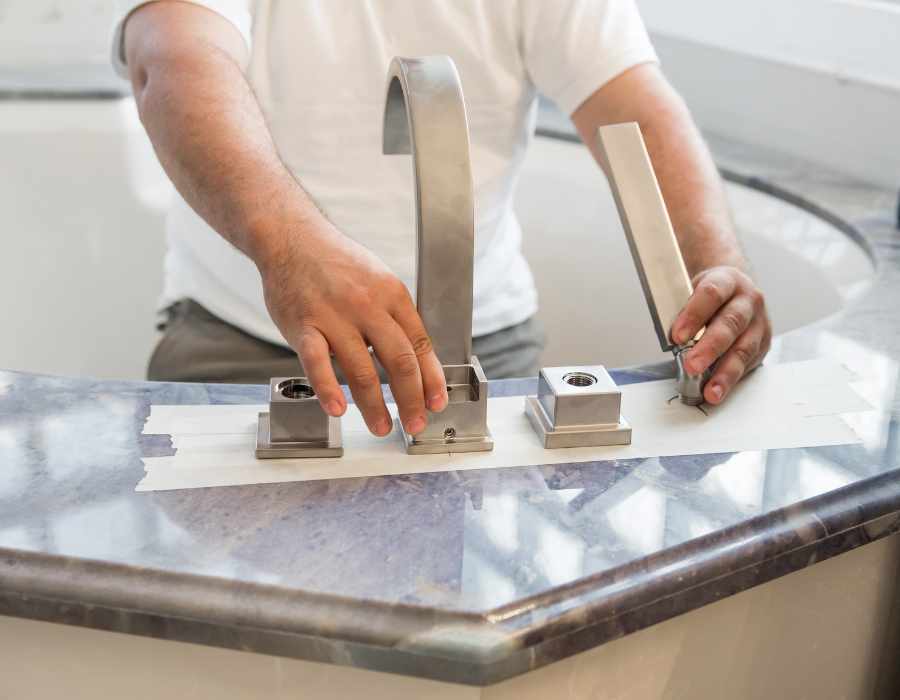
Choosing the right walk-in tub is just the first step; proper installation and maintenance are essential for ensuring its longevity and optimal performance. Here’s what you need to know about installation and maintenance:
Professional vs. DIY Installation
- Professional Installation: Hiring a professional ensures the tub is installed correctly, minimizing potential issues such as leaks or improper fitting. Professionals can also handle any necessary modifications to plumbing or electrical systems. The main drawback is the additional cost associated with hiring a professional service.
- DIY Installation: Installing the tub yourself can save money and may be feasible for those with plumbing and carpentry skills. However, DIY installation can be risky if you lack the proper expertise, potentially leading to improper installation and voiding the warranty.
When opting for professional installation, select a qualified and experienced installer. Look for certified professionals who specialize in walk-in tub installations and have good customer reviews. Verify their credentials and ask for references or examples of previous work. Ensure they provide a detailed estimate and clear timeline for the installation.
Routine Maintenance Tips
Regular cleaning is essential to maintain your walk-in tub. Use mild, non-abrasive cleaners to prevent damaging the tub’s surfaces. Clean the tub, fixtures, and jets regularly to prevent buildup of soap scum, mold, and mildew. Avoid using harsh chemicals that could erode seals or finishes.
Inspect your walk-in tub periodically for signs of wear and tear, such as cracks, leaks, or malfunctions in the door seals. Pay attention to the operation of the control panels and the functionality of jets and drains. Address any issues promptly to prevent further damage and ensure the tub remains safe to use.
Understand the terms of the warranty provided with your walk-in tub. Most manufacturers offer warranties that cover specific parts and components for a set period. Familiarize yourself with what is covered and any conditions that may void the warranty. Consider service agreements that provide regular maintenance checks and repairs, which can extend the life of your tub.
Cost and Financing Options
Investing in a walk-in tub can be a significant expense, but understanding the cost factors and available financing options can help you manage this investment effectively. Here’s what you should consider:
Understanding the Price Range
Walk-in tubs vary widely in price based on features, materials, and brand. Basic models can start at around $2,500 to $5,000, while high-end models with advanced features such as hydrotherapy jets, heated surfaces, and custom options can range from $7,000 to $15,000 or more. Evaluate your needs and budget to choose a model that offers the best value for your investment.
The base price of the tub is just part of the overall cost. Installation fees can range from $1,000 to $3,000, depending on the complexity of the installation and any required modifications to your bathroom. Additional costs may include plumbing or electrical work, permits, and custom features like upgraded fixtures or finishes.
Financing and Payment Plans
Many manufacturers and retailers offer financing options to help spread the cost of a walk-in tub over time. These can include low-interest loans, monthly payment plans, and deferred payment options. Explore different financing plans to find one that suits your financial situation and minimizes the immediate financial burden.
Check if you are eligible for any government assistance programs that cover home modifications for seniors or individuals with disabilities. Some Medicare Advantage plans and long-term care insurance policies may cover a portion of the cost for medically necessary equipment. Veterans may also qualify for grants or assistance through VA programs.
Evaluating Value for Money
When comparing walk-in tubs, consider the features that are most important to you and how they impact the overall cost. A more expensive tub with features like hydrotherapy jets or heated surfaces may offer greater long-term benefits compared to a basic model. Weigh the initial cost against the potential health and wellness benefits.
Investing in a walk-in tub can provide long-term savings by reducing the need for assisted bathing services or preventing costly injuries from falls. The therapeutic features of high-end models can also offer health benefits that enhance quality of life and reduce medical expenses over time. Consider these long-term advantages when evaluating the overall value.
Choosing the Right Walk-In Tub Manufacturer
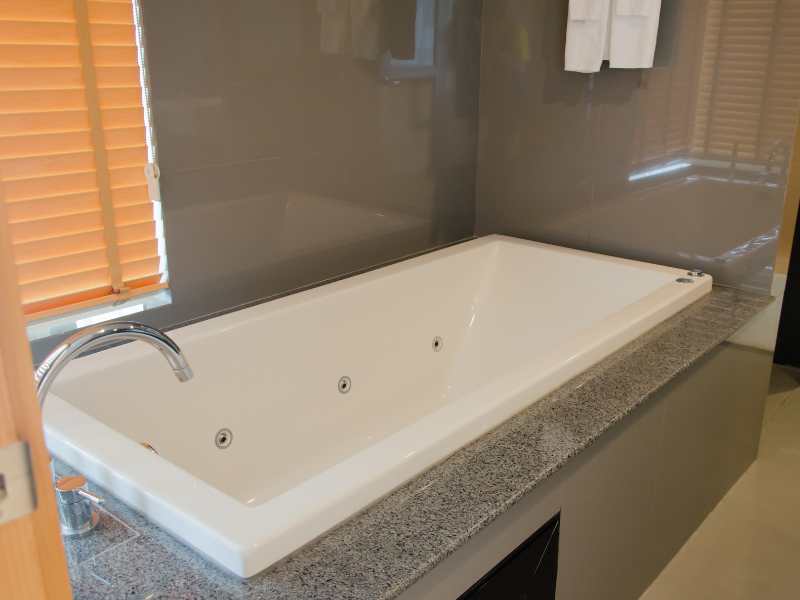
Selecting the right manufacturer for your walk-in tub is imperative for ensuring you get a high-quality product backed by reliable customer support. Here’s a guide to help you choose the best manufacturer:
Researching Reputable Brands
Start by identifying well-known and reputable walk-in tub manufacturers. Brands such as Kohler, Safe Step, American Standard, and Jacuzzi are recognized for their quality and reliability. Research each brand’s reputation, product offerings, and customer satisfaction to get an idea of their market standing.
Look for customer reviews and ratings on trusted review sites and forums. Reviews can provide insights into the experiences of other buyers, highlighting both the strengths and potential issues of different models. Pay attention to feedback on durability, ease of use, and the effectiveness of customer support.
Ensure that the manufacturer adheres to industry standards and certifications. Products that meet or exceed safety and quality standards, such as UL certification, ADA compliance, or ETL listing, are more likely to provide reliable performance and safety.
Evaluating Customer Support and Warranty
Examine the warranty offered by the manufacturer. A good warranty should cover key components, such as the door seal, water system, and structure, for a reasonable duration, typically ranging from 5 to 10 years. Understand what is included and any conditions that may affect warranty claims.
Assess the quality of the manufacturer’s customer service. Reach out with questions or concerns to gauge their responsiveness and willingness to assist. A manufacturer that provides prompt, helpful customer support is more likely to address any issues that arise with your walk-in tub efficiently.
Check if the manufacturer offers a network of certified installers and service technicians. A strong support network ensures that you have access to professional installation and maintenance services, which can be essential for the long-term performance of your walk-in tub.
Verify that replacement parts and repair services are readily available. Manufacturers with a well-stocked supply chain and responsive repair services can minimize downtime if your tub requires maintenance or repairs.
Understand the manufacturer’s return policy and satisfaction guarantees. Some manufacturers offer trial periods or money-back guarantees, allowing you to test the tub and ensure it meets your expectations. This can provide peace of mind and flexibility if you’re not fully satisfied with the product.
In Summary
Choosing the best walk-in bathtubs for seniors involves careful consideration of safety, comfort, and therapeutic benefits. These tubs are more than just a bathroom fixture—they are an investment in health, independence, and quality of life. Here’s a recap and final advice to help you make the best decision:
Recap of Key Points
- Understand the Benefits: Walk-in tubs provide increased safety, enhanced accessibility, and therapeutic features that traditional tubs do not offer. Key benefits include low threshold entry, anti-slip floors, and hydrotherapy jets.
- Evaluate Key Considerations: When choosing a walk-in tub, consider tub dimensions, types, door designs, and materials. Ensure the tub fits your bathroom space and meets your specific needs.
- Focus on Essential Features: Prioritize safety features like a grab bar and anti-scald technology, as well as comfort features such as heated seats and massage jets. These features enhance the overall bathing experience and provide therapeutic benefits.
- Plan for Installation and Maintenance: Decide whether to hire a professional or undertake DIY installation, and understand the routine maintenance required to keep the tub in good condition.
- Explore Cost and Financing: Understand the price range for walk-in tubs, additional costs for installation, and available financing options. Evaluate the long-term value and savings associated with your investment.
Scheduling a Consultation
Schedule a consultation with Mobile Walk-in Showers and Tubs. We can provide personalized recommendations based on your bathroom layout, budget, and specific requirements.

FAQs
How long does the installation of a walk-in bathtub take?
The installation of walk-in tubs for seniors typically takes one to two days. This time frame can vary depending on whether modifications to plumbing or electrical systems are needed and whether you are replacing an existing bathtub. For a smooth installation process, ensure the space is prepped and accessible.
Can a walk-in tub fit in the same space as a standard bathtub?
Yes, most walk-in bathtubs are designed to fit in the same space as a standard soaking tub or shower. This means you can replace your old tub without significant alterations to your bathroom layout. Ensure you measure your existing space accurately and choose a walk-in tub with similar dimensions.
Are walk-in bathtubs covered by Medicare or other insurance?
Medicare does not typically cover walk-in bathtubs because they are not considered durable medical equipment. However, some private insurance plans or Medicare Advantage plans might offer partial coverage if the tub is deemed medically necessary. Always check with your insurance provider for specifics.
How do I choose the best walk-in tubs for seniors with mobility issues?
When selecting the best walk-in tub for seniors with mobility issues, consider low step entries, wide seats, and wheelchair accessible features. Look for sturdy handrails, anti-slip floors, and an easy-to-operate tub door. Features like a hydro massage and heated backrest can also make a huge difference in comfort and usability.
Can I get a walk-in tub with a shower installed?
Yes, many walk-in tubs for seniors can come with a shower package. This combination allows you to bathe or shower according to your preference, providing flexibility and enhancing the overall functionality of the tub. Ensure there is enough room for both the tub and shower installed.
What safety features should I look for in a walk-in bath?
Look for essential safety features such as grab bars, anti-slip floors, and sturdy handrails. A low step entry and a secure tub door are also critical for preventing falls. Additionally, temperature control systems can prevent hot water burns, addressing common safety concerns.
Do walk-in bathtubs have options for foot massage or other therapeutic features?
Yes, many of the best walk-in tubs come with therapeutic options such as foot massage jets, air massage, and hydrotherapy jets. These features can enhance relaxation, relieve pain, and improve circulation, making walk-in bathtubs a great choice for seniors seeking additional health benefits.
How do I maintain the water temperature in a walk-in tub?
Walk-in tubs often come with desired temperature controls and anti-scald technology to maintain consistent hot water. These systems allow you to set and maintain the ideal water temperature, ensuring a comfortable and safe bathing experience.
What are the benefits of a wide seat in a walk-in tub?
A wide seat in walk-in bathtubs provides extra comfort and support, especially for senior citizens who may need more space for ease of movement. A wider seat also facilitates sitting and standing transitions, making it easier to bathe safely and comfortably.
How do I find reputable walk-in tub brands?
Research walk-in tub brands by checking reviews, ratings, and industry certifications. Look for one company that offers a comprehensive range of features, excellent customer service, and a solid warranty. Brands like Kohler, Safe Step, American Standard, and Jacuzzi are known for their reliability.
Can I get a free quote for a walk-in tub?
Many walk-in tub manufacturers and dealers offer free quotes for potential buyers. This allows you to understand the costs involved and explore different options without any obligation. Be sure to compare quotes from multiple tub brands to find the best deal.
What extra features should I consider in a walk-in bath?
Consider additional features such as heated surfaces, chromotherapy, aromatherapy, and adjustable jets. These extra features can enhance the bathing experience by adding elements of relaxation and therapy, making your walk-in bath more enjoyable and beneficial.
How can I ensure my walk-in tub will last a very long time?
To ensure your walk-in tub lasts a very long time, follow regular maintenance guidelines, such as cleaning the anti-slip floor, checking the tub door seals, and servicing the jets. Choose a tub made from durable materials like acrylic and ensure it is installed by a professional to avoid potential issues.
Are there options for combining a walk-in tub with a soaking tub or shower?
Yes, some models offer the versatility to function as a soaking tub or be combined with a shower package. This flexibility allows for different bathing preferences and maximizes the use of your bathroom space.
What should I expect in terms of water usage for walk-in baths?
Walk-in baths may use more water than standard bathtubs due to their larger size and the additional features like jets. However, efficient models are designed to fill and drain quickly, ensuring that you have a pleasant bathing experience without excessive water consumption.
